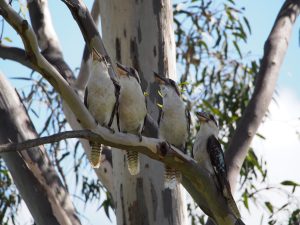Mary Midgley has become an increasingly prominent name in recent years. This could be attributed to her passing in 2018, which, along with the rise in Midgley and “Wartime Quartet” scholarship, has drawn attention to her significant philosophical output and contributions. Yet, for all the well-deserved attention, Midgley has long held a reputation for nuanced and clear thinking in various areas—human nature, mind, morality, gender, religion, and science—and has been recognized as a pioneering thinker in the animal rights and environmental movements. She has also been appreciated for making philosophy accessible while demonstrating its relevance. In fact, she believed that philosophy is a necessity and made this case through her final book at age ninety-nine. Whether Midgley is a new or familiar voice, she is worth knowing, especially for those who think that philosophy can and should make a difference.
Mary Beatrice Scrutton, born in London on September 13, 1919, had a long and unconventional philosophical career. During World War II, she studied Classics at Somerville College, Oxford, and befriended Elizabeth Anscombe, Philippa Foot, and Iris Murdoch, forming the Quartet who transformed British philosophy in the twentieth century. Midgley began a doctorate on Plotinus and seemed poised to follow a traditional Oxford academic path, but did not complete her degree. In her memoir, she notes that the project may have been too ambitious, but also remarks that Oxford’s environment at the time was stifling and nearly drove her away from philosophy. She then accepted a philosophy position at the University of Reading in 1949. In 1950, she married the philosopher Geoffrey Midgley. They moved to Newcastle, where she raised three children, presented radio and television broadcasts (including this rejected one), reviewed books, and wrote articles for newspapers and magazines. In 1964, she took a position in the Department of Philosophy at Newcastle University. She published her first and most influential book, Beast and Man: The Roots of Human Nature, in 1978, at nearly sixty years old and just two years before her retirement. Since then, she wrote prodigiously, producing over 250 publications until her death on October 10, 2018. Midgley received recognition for her contributions to philosophy during her lifetime—honorary doctorates, the Gifford Lectures, the Edinburgh Medal—and has since been the focus (often alongside her Quartet colleagues) of numerous events, conferences, podcasts, and publications.
Midgley’s stance on the importance of philosophy is perhaps best illustrated by her well-known plumbing analogy. After years of closures in British philosophy departments, including Newcastle, she pushed back against the common conception that philosophy is a luxury reserved for ivory-tower specialists. Philosophy can indeed be like this, but it also involves topics out in the world that affect our lives on the ground. Or, perhaps, under the ground, as she argued that philosophy is, among other things, like plumbing. Both practices deal with complex, underlying systems that support our lives. These parallel systems of thought and pipework go largely unnoticed until something goes wrong. Conceptual faults and tangles—like their counterparts in the pipework—can cause real difficulties for life above the surface. Philosophy is valuable because it provides the tools required to diagnose the problems that ail us and can offer repairs to restore or improve things. Without dragging the analogy too far, we might say that both plumbing and philosophy are necessities, often urgent. That point may be more obvious with plumbing, but it also applies to philosophy, since Midgley argued that how we think influences how we live.
Midgley’s philosophical plumbing mainly focused on conceptual faults and tangles related to human nature and morality. In Beast and Man, she writes, “We are not just rather like animals; we are animals.” This straightforward but often neglected premise drove most of her work over the next forty years. She believed that we, like other animals, have a complex nature relevant to our morality. We might explore various paths in Midgley’s thinking in this area, such as her metaethics and what is good or bad for a species with characteristic needs, capacities, and ways of life. Or, the facilitatory role of reason in integrating beings with complex motives and emotional structures. However, I’d like to zoom out a bit to some of the big-picture ways that Midgley examines the myths of human nature before zooming back in to my area of animal and environmental ethics.
Understanding our nature is crucial because our conceptions of human nature shape how we think of ourselves. As we’ve already seen in Midgley’s plumbing analogy, how we think influences how we live, including how we treat others (both human and nonhuman). Thus, some of the root causes for mistreating one another and the natural world may lie in how we view ourselves and the world around us. She challenged discourse on human nature, particularly abstractionist positions that distanced humanity from nature due to perceived excellences (mind, soul, choice, etc.) and reductionist positions that took our animal nature seriously but isolated and exaggerated one or a few aspects of it (sex, aggression, selfishness, etc.). In her view, complementary aspects of human nature were made into false dichotomies in these and other extreme positions—mind versus body, reason versus emotion, male versus female, self versus others, and so on—resulting in fragmentary and incoherent accounts of human nature that skew our moral thinking.
These accounts of human nature can be found throughout history across philosophical, religious, scientific, and other literature. Midgley argued that conceptions of human nature are often embedded in myths or imaginative visions. These are not true-false or traditionally religious myths, but powerful and inescapable ways of envisioning the world that influence our moral principles and attitudes. Midgley engages in much of her diagnostic and repair work on these visions, citing the need to get behind specific arguments to the world-pictures that make them look plausible. I will focus on the myths of individualism and the “self versus others” dichotomy. This is because her diagnostic critique of these visions and resultant constructive repair work contribute to her integrated conception of the relational self.
Midgley regularly returned to a critique of the contract myth and other individualist visions that promoted an excessively atomistic and egoistic picture of human nature. The Hobbesian notion of discrete human agents motivated primarily, if not entirely, by competitive self-interest was, in her view, unrealistic and incomplete, encompassing much of what is wrong with hyper-individualism. While these may be aspects of our nature, this vision of human life in the state of nature—as “solitary, poor, nasty, brutish, and short”—is not a complete picture of human nature, nor a universal law. We are members of an intensely social species and have never been isolated individuals. Our development may have required selfishness and competition, but also deep, affective bonds, cooperation, and interdependence. As an appreciator of Hobbes, Midgley might forgive him for a one-sided, pre-Darwinian vision that lacked or downplayed these essential features of our social natures. But that grace did not extend to her contemporaries, where she saw the political and economic climate of unbridled egoism and competition permeating various forms of discourse. This included some scientific and scientific-sounding discourse, which she believed gained traction due largely to their alignment with the myths of individualism.
For Midgley, it is essential to recognize that myths are partial and provisional pictures of the world, each with its own dramatic emphases and consequences on our moral landscape. The concepts embedded in myths reflect our efforts to make sense of specific aspects of life, but they are often localized and limited. Midgley argued that they must connect to a broader conceptual network to form a balanced and coherent whole. Though the contract and related individualist concepts can be politically useful—for example, in advancing autonomy and resisting tyrannical forces—they must be complemented by notions highlighting the significance of others, their interests, and our mutual dependence. Visions that emphasize the former over the latter are not necessarily representative of, or conducive to, the types of lives that people want and perhaps need to live. Instead, they risk distorting our self-perception and, significantly, our treatment of others. They can promote an instrumental view of others as externals or competitors to whom we have no intrinsic connection. From this atomistic and egoistic perspective, appeals to self-interest become necessary to justify moral obligations rather than more social or outward-looking motivations. Furthermore, society is envisioned more as a loose aggregate of contracting agents than an interdependent community of significance.
Midgley’s repair work highlighted the reality and importance of our natural relationality and sociality. We are beings who form deep and meaningful bonds of care and affection with others in interdependent communities, which entail concerns, obligations, and priorities beyond mere self-interest. The flourishing of others and these communities is not a matter of indifference to us, and “selfishness” is only coherent against this background. While we value freedom and self-determination, we are inescapably molded and shaped by each other and our communities. As a corrective to atomistic egoism, which envisions us as self-interested billiard balls bouncing off each other, Midgley suggested that we picture ourselves in more interconnected and holistic ways—for example, as the many integral parts of a sprawling, flowering tree. This emphasis on our intrinsic relationality provides a more balanced picture of our lives as social creatures and a more realistic foundation for our moral visions in a complex world full of otherness.
Midgley introduced this relational and communitarian element to the animal rights movement in the early 1980s. In a period dominated by rationalist individualist approaches to animal ethics, Midgley highlighted how our social and emotional connection with animals can easily be overlooked or dismissed by perspectives that favor sweeping moral principles (such as utilitarian or rights-based ones). For all their promise, Midgley regarded the predominant positions in animal ethics as often incomplete, and in some cases misguided, without a more comprehensive picture of why animals “matter.” In addition to exploring the rich subjective lives of animals and emphasizing human-animal continuity, Midgley drew attention to the fact that animals are significant members of our “mixed communities” and are connected to us in various emotive and relational ways. As members of our mixed communities, animals are fellow subjects, not objects or things, and they matter as such, as does the community. This innovative outlook, which complements recent integrative approaches, provides us with good reasons, among many others, to take the needs of animals seriously.
This relational and communitarian emphasis extended further for Midgley into a form of relational holism. She maintained that a more integrated, connective, and embedded notion of our nature is necessary to change our treatment of the natural world. Our many entanglements stretch beyond individual relationships and include broader, overlapping collectives: e.g., families, communities, cultures, ecosystems, and nature as a whole. For Midgley, nature is not an inert and static background, but our home, a vital whole to which we belong (which is why she was drawn to Gaian thinking). Consequently, she proposed that the natural world has a variety of claims on us. Sentient being—human and non-human—have “social claims” on us, while non-sentient nature, including systems and collectives of various sorts, has “ecological claims” on us. In turn, sets of continuous and overlapping claims, including special responsibility, special need, prudence, wonder, kinship, and so on, coalesce around all types of beings and entities in our social and ecological worlds. By integrating human and nonhuman claims in this way, Midgley provided us with a vision and general outline of how to take a whole range of obligations seriously and offered direction for potentially reconciling some challenges in animal and environmental ethics.
This overview of Midgley’s life and work is far too brief. Fortunately, her writings and the growing body of scholarship addressing her work provide a wealth of material for further exploration, not to mention the public philosophical projects she continues to inspire. I have focused on her relevance to animal and environmental ethics. If we are to re-envision ourselves and our relationships with one another and the natural world, we must take thinkers like Midgley seriously. She provides guidance in diagnosing and repairing the vital connections between thought and action, and our treatment of animals and the environment is a good example of where this work is urgent. Philosophy, as she reminds us, is necessary for expanding our moral visions and confronting such challenges in a complex and interconnected world.
I am grateful for feedback from Ian James Kidd and Ellie Robson.
The post Mary Midgley and The Necessity of Philosophy first appeared on Blog of the APA.
Read the full article which is published on APA Online (external link)






